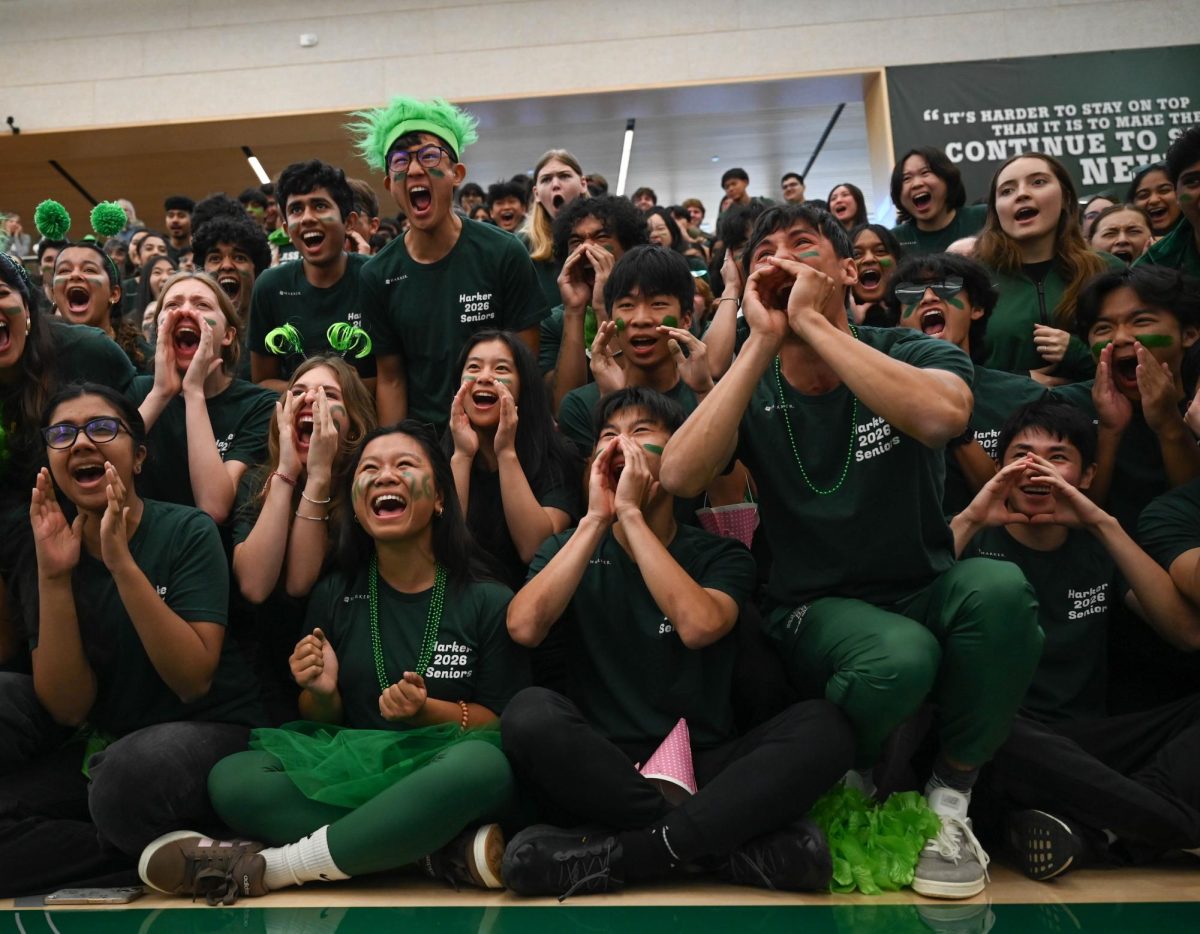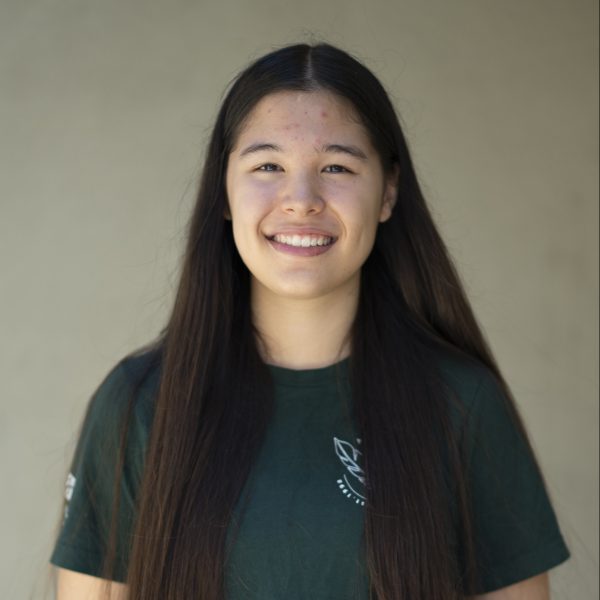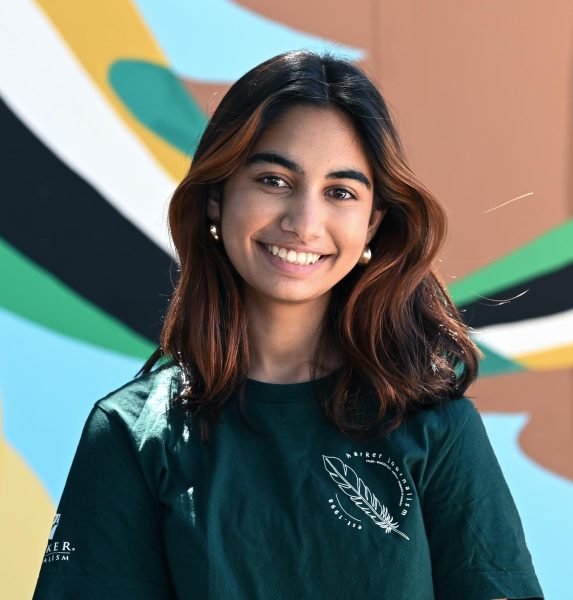Five Near Mitra Scholars presented their year-long research projects to an audience of over 40 students, teachers and family members and honored incoming Near Mitra Scholars on April 24 in the Nichols Auditorium.
Overseen by the history department and librarians, the John Near & Mitra Family Scholar Grant is available for rising seniors every year. Near Mitra Scholars work on an in-depth university-level history research paper over the course of their senior year, and each scholar receives guidance from the librarians and a teacher who acts as their mentor. Near Scholars study U.S.-related topics, while Mitra Scholars focus on international subjects.
Near Mitra co-director and mentor Donna Gilbert opened the ceremony by explaining the history of the Near Mitra scholarship and thanking the current scholars for their time and dedication. Near Scholar Andrew Smith (12) started off the presentations by introducing the Boston Freedom Trail’s origins as a tool to generate money rather than a site of history. He continued with discussing why he decided to research his chosen topic.
“The Near Mitra program has been a full circle experience for me this year because I was one of those tourists at seven years old,” Andrew said. “When I was in first grade, I went to Boston. I fell in love with the history. I galloped along the streets of Boston with my brother and my cousins, and I got so excited about all these stories of people in places that happened a long time ago.”
Ritu Belani (12) continued with her presentation on Muslim American standup comedy post-9/11. Ritu also linked the trend of comedians playing on their religious and racial identities to her own comedy career. Daphne Avkarogullari (12) explored W. E. B. Du Bois’ idea of double consciousness in Black Americans and the internal conflict caused by it.
Trisha Iyer (12) examined the connections between the propaganda and personality cults of Augustus Caesar and Benito Mussolini from her perspective as a Latin student.
“Mussolini came to power in the early 20th century, and he had access to technology that we’d never seen before, like mass printing, television photographs, and he could use all of that to push an image of himself and of fascist Italy to an extent that has probably not been seen until that point in time,” Trisha said. “I wanted to look at him as a model for propaganda, how it forms, what makes it effective and also so very evil inherently.”
Alena Suleiman (12) concluded the presentations with a recap of her experience working at the Asian Art Museum in San Francisco and how she came across artist Bernice Bing’s works, which her Mitra project focused on. She explained how Bing’s racial and gender identities converged in her art through the term ‘quantum bingo,’ coined by curator Lydia Matthews.
“Through this idea of quantum dimensions, it connects the idea that everything is interconnected in the universe, like life and work and how they’re influenced by this network of past and present influences,” Alena said. “[Lydia Matthews] presents these nine aspects of life in the game of quantum bingo, and together they paint the multifaceted portrait of Bing’s life and work.”
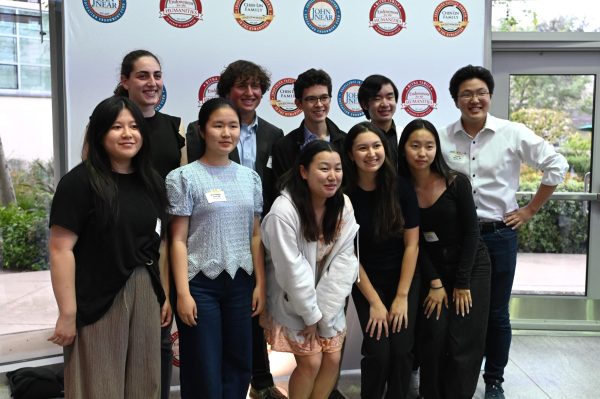
The current scholars then shared advice for the incoming scholars and gifted each with a personalized Near Mitra pen. The 10 Near Mitra scholars for the 2024-25 school year were named on April 12 after an application process where scholars submitted answers to questions about their project and motivation for applying. The new Near Scholars are juniors Felix Chen, Anwen Hao, Gabe Sachse and Jason Shim, and the new Mitra Scholars are Jia Jia Jiang, Valerie Li, Katerina Matta, Young Min, Emily Mitnick and Sahngwie Yim. Director of Advancement Kim Lobe invited the current scholars to each sign a paper cementing the completion of their projects.
After the presentations concluded, guests went out into the Rotunda for food and drinks. Co-Director of Near Mitra and Librarian Lauri Vaughan commented on the goals of the Near Mitra program.
“In other words, young people have a completely different perspective on anything in our past and anything in our history and it’s so absolutely essential to humanity that fresh eyes look at old things,” Vaughan said. “And that’s what gets us to be better.”
This year’s Near Mitra papers will be available online in the following weeks.


















![“[Building nerf blasters] became this outlet of creativity for me that hasn't been matched by anything else. The process [of] making a build complete to your desire is such a painstakingly difficult process, but I've had to learn from [the skills needed from] soldering to proper painting. There's so many different options for everything, if you think about it, it exists. The best part is [that] if it doesn't exist, you can build it yourself," Ishaan Parate said.](https://harkeraquila.com/wp-content/uploads/2022/08/DSC_8149-900x604.jpg)




![“When I came into high school, I was ready to be a follower. But DECA was a game changer for me. It helped me overcome my fear of public speaking, and it's played such a major role in who I've become today. To be able to successfully lead a chapter of 150 students, an officer team and be one of the upperclassmen I once really admired is something I'm [really] proud of,” Anvitha Tummala ('21) said.](https://harkeraquila.com/wp-content/uploads/2021/07/Screen-Shot-2021-07-25-at-9.50.05-AM-900x594.png)







![“I think getting up in the morning and having a sense of purpose [is exciting]. I think without a certain amount of drive, life is kind of obsolete and mundane, and I think having that every single day is what makes each day unique and kind of makes life exciting,” Neymika Jain (12) said.](https://harkeraquila.com/wp-content/uploads/2017/06/Screen-Shot-2017-06-03-at-4.54.16-PM.png)








![“My slogan is ‘slow feet, don’t eat, and I’m hungry.’ You need to run fast to get where you are–you aren't going to get those championships if you aren't fast,” Angel Cervantes (12) said. “I want to do well in school on my tests and in track and win championships for my team. I live by that, [and] I can do that anywhere: in the classroom or on the field.”](https://harkeraquila.com/wp-content/uploads/2018/06/DSC5146-900x601.jpg)
![“[Volleyball has] taught me how to fall correctly, and another thing it taught is that you don’t have to be the best at something to be good at it. If you just hit the ball in a smart way, then it still scores points and you’re good at it. You could be a background player and still make a much bigger impact on the team than you would think,” Anya Gert (’20) said.](https://harkeraquila.com/wp-content/uploads/2020/06/AnnaGert_JinTuan_HoHPhotoEdited-600x900.jpeg)

![“I'm not nearly there yet, but [my confidence has] definitely been getting better since I was pretty shy and timid coming into Harker my freshman year. I know that there's a lot of people that are really confident in what they do, and I really admire them. Everyone's so driven and that has really pushed me to kind of try to find my own place in high school and be more confident,” Alyssa Huang (’20) said.](https://harkeraquila.com/wp-content/uploads/2020/06/AlyssaHuang_EmilyChen_HoHPhoto-900x749.jpeg)



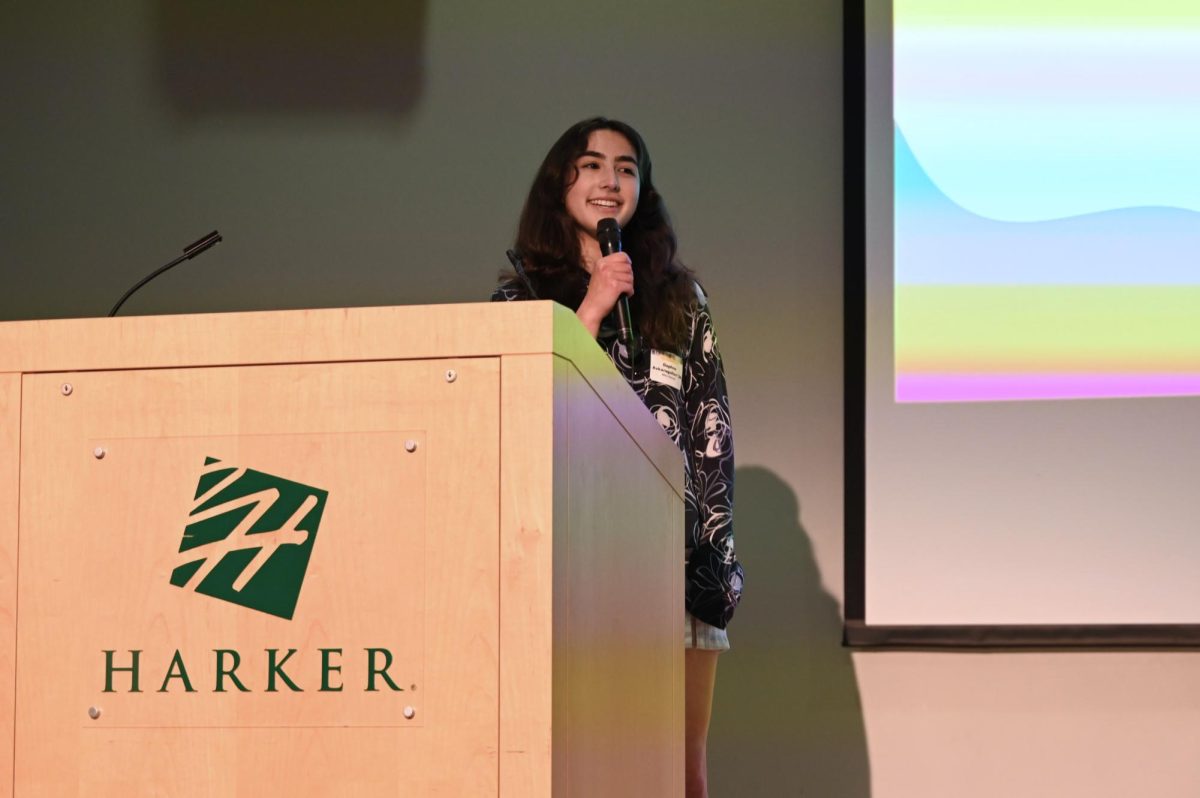



![LALC Vice President of External Affairs Raeanne Li (11) explains the International Phonetic Alphabet to attendees. "We decided to have more fun topics this year instead of just talking about the same things every year so our older members can also [enjoy],” Raeanne said.](https://harkeraquila.com/wp-content/uploads/2025/10/DSC_4627-1200x795.jpg)

